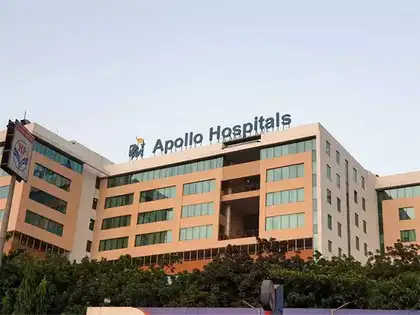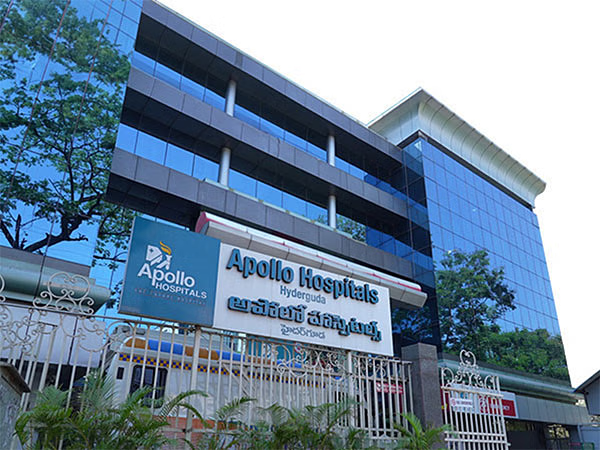Apollo Hospitals’ Q1 FY26 growth story: Integrated care, digital firepower, and 4,300-bed expansion set the stage for India’s top healthcare brand.

Imagine you’re navigating a crisis—say, a severe decline in patient footfall—but you’ve already built an ecosystem so resilient it absorbs shocks and thrives. That’s the moment Apollo Hospitals finds itself in Q1 FY26. The primary keyword “Apollo Hospitals” lands itself right at the heart of this narrative, just like the beating pulse beneath the headline. In this blog, I’ll peel back the numbers, share what they really mean, and talk straight—as if I’m explaining it over chai.
Q1 FY26: Numbers That Spark Real Conversation
At first glance, these figures might seem like just another quarterly report:
- Consolidated net profit soared 42% to ₹433 crore versus Q1 FY25.The Economic TimesReuters+1
- Revenue climbed 15% to ₹5,842 crore.The Economic TimesSamcoReuters
- EBITDA jumped 26% to ₹852 crore, hinting at leaner operations and better margins.Samco
- Hospital revenues rose by 11% year-on-year; inpatient volumes nudged up 3%, while ARPP (average revenue per patient) skated up 11%.Samco
- Occupancy sat at 65%, down 300 basis points—but that’s more than offset by higher margins and pricing.SamcoReuters
- The HealthCo (retail and digital pharmacies) segment grew 19%, improved margins, and turned “PAT positive.”SamcoReuters
- Shares popped nearly 5–6% in early trade—markets do notice when fundamentals click.The Economic TimesBusiness UpturnSamco
What to Carry Forward:
Apollo’s performance is not just a flash—it reflects a triple-engine model that’s firing on all cylinders. Cost discipline, pricing power, and digital retail are converging for real impact.
Three Growth Engines That Are More than Buzzwords

1. Hospitals & Healthcare Services
Think of this as Apollo’s “home ground advantage.” Despite occupancy slipping slightly, smart upgrades pushed ARPP up, and even a small bump in patient numbers counted for a lot. Essentially, Apollo treated each patient more efficiently—and better margins followed.
It’s like improving your grades without studying more—just smarter strategies that deliver bigger results.
2. Apollo HealthCo (Retail + Digital)
With 5,000+ pharmacies and Apollo 24/7, Apollo HealthCo is India’s healthcare omni-channel champion. In Q1 FY26, it grew 19% and finally went PAT positive—meaning retail and digital aren’t just feeders, they’re fast becoming profit centers.ReutersWikipedia
Retail health isn’t a side hustle anymore—it’s a profit driver with staying power.
3. Digital & Pharma Distribution
From tele-consults to early cancer detection via OraLife and AI programs like Apollo Zen—Apollo is weaving tech into core care. This isn’t lip service; it’s a strategic belief that healthcare must be omnipresent, not just on-site.Samco
** H3 takeaway:**
Digital isn’t trendy for Apollo—it’s indispensable.
Bed Expansion: A Bet That Feeds the Future
Apollo’s board has greenlit a ₹7,600 crore bet over the next 5 years—adding 4,300 beds, with key projects targeting Bengaluru and Hyderabad.Outlook BusinessReuters+1
Why this matters: it’s like getting your house insurance before the storm hits—you’re proactively scaling to meet demand, not reacting. If India’s private hospital space rebounds, those beds will fill, and margins will benefit.
Expert Context: Analysts Weigh In

Balancing optimism and caution, some financial voices stayed neutral—for example, Nomura kept targeting ₹6,856, while Citi called a ‘buy’ with a target of ₹8,260.Samco
Here’s what that split signals:
- Citi’s optimism reflects faith that digital and retail momentum, plus bed growth, will boost full-year earnings.
- Nomura’s prudence may stem from slower occupancy or the lag between capital deployment and output.
Even analysts know that while the story is strong now, execution in the next few quarters will be what counts.
Expanding the Narrative with Fresh, Indian-Centric Flair
- Analogy: Think of Apollo as a growing college hosting students (patients). It’s not just about filling seats—better curriculum (equipment), stronger teachers (doctors), and digital access (online classes) matter. That curriculum is delivering.
- Example: Imagine getting an AI-based oral-cancer screening at your neighborhood pharmacy. That’s innovation meeting the person.
- Tip for readers: If you’re tracking healthcare stocks, look for companies investing in tech, not just more four-wall expansion. It’s the digital add-ons that pay off sustainably.
What This Means for You
- Investor Perspective: Apollo isn’t a one-trick pony. If you’re building a healthcare portfolio, this blend of hospital operations, digital innovation, and retail access is rare.
- Policy Watch: India needs more smart hospital beds. Apollo’s scalable model could also be policy-relevant for public-private partnerships.
- Healthcare for You: More beds, better tech, and stronger margins might translate to better access and higher quality care—eventually.
Call to Action
What’s your take? Do you think tech-led healthcare is the future, or should Apollo focus on core hospitals? Drop your thoughts below—I’d love to hear what you’re watching next!

Why did Apollo Hospitals’ net profit rise 42% in Q1 FY26?
Stronger margins, +15% revenue, growth across hospitals, retail health, and digital platforms powered the jump.
What are Apollo’s three growth engines?
Healthcare services, retail health & diagnostics, and digital plus pharma distribution.
Is Apollo’s digital push meaningful?
Absolutely—it includes AI-powered care (Apollo Zen), early cancer screening (OraLife), and omni-channel platforms.
What’s Apollo’s bed expansion plan?
Adding 4,300 beds over 5 years (~₹7,600 crore), focusing on Bengaluru & Hyderabad.
How did HealthCo perform in Q1 FY26?
Revenue +19%, improved margins, and turned PAT positive—marking profitability in retail & digital.